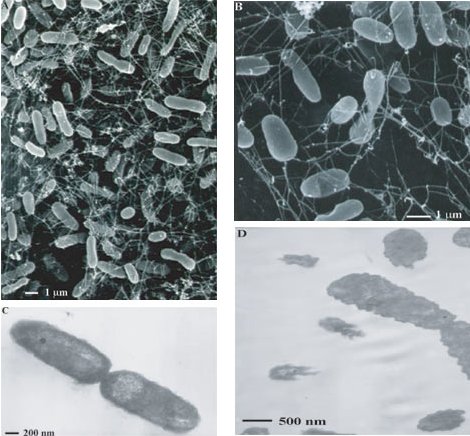thermophiles

Photomicrographs of a subseafloor thermophile isolated from deep-sea hydrothermal vent fluids. This organism eats sulfur and hydrogen and fixes its own carbon from carbon dioxide. (A, B) Scanning electron micrographs, and (C, D) transmission electron micrographs thin sections. Image courtesy of Julie Huber. Text: NOAA.
Thermophiles are microbes that reproduce and grow in the temperature range 40° to 70°C (104° to 158°F). A key thermophilic adaptation of an organism is the presence of heat stable proteins. These proteins are more densely packed to exclude internal water, are more hydrophobic, have more salt bridges, and have more saturated and longer chained fatty acids. Thermophilic archaea have ether-linked, branched chain fatty acids that are more hydrophobic still.
Capable of thriving at even higher temperatures than thermophiles are hyperthermophiles.


